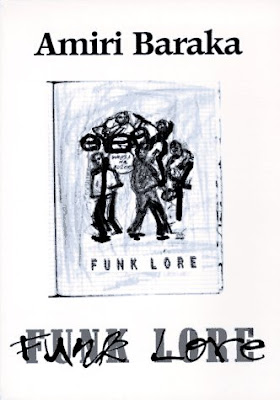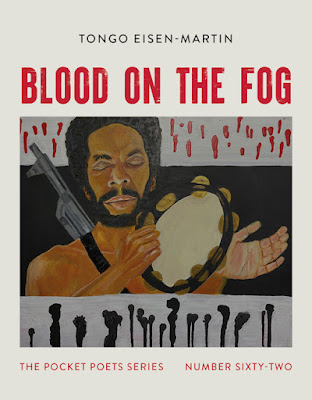WHEN THE HIBISCUS FALLS by M. EVELINA GALANG
Reading by Eileen Tabios
When the Hibiscus Falls by M. Evelina Galang
(Coffee House Press, 2023)
This is a book where the very first sentence rocked/rocks me. I read it and had to pause for a meaningful while to meditate over it:
“No one ever gets the story right.”
If, from that first sentence, you immediately go to the book’s last story, you’d glean the brilliance with which the book was organized, which is to say, conceptualized.
But let’s pause to laugh, though (well, I laugh). “No one ever gets the story right,” M. Evelina Galang states in her new short story collection, When the Hibiscus Falls. Then she proceeds to deliver a solid collection of 17 short stories. As the first short story proclaims with its title, Strength is the Woman. Strong enough for this woman-author to hold onto contradictions without being taken down by them.
Psychic strength was clearly required to write these stories revolving around generations of Filipino women in the U.S. and the Philippines, and the roles they play: daughters, sisters, mothers, aunties, cousins, lolas, and friends. My personal favorite may be “Hilot of Paranaque” for eliciting the most empathy from me. But that it has this effect is not a good thing: I empathize most with this story because I’ve met or know of too many women who have had to sacrifice themselves to leave the Philippines and, as they say, go abroad in order to finance better lives for themselves and/or their families. There can never be enough stories about this type of sacrifice.
The title story, “When the Hibiscus Falls,” is powerful—it made me meditate on the specific nature of girls. As affirmed by my own childhood (I was obedient until I was not), I observe that when “good girls” rebel, their rebellion is more voluminous if not violent than that of the preternal mischief-makers or disobedient girls. Mayari was a bookworm/Ph.D. student who researched her people’s culture—the demigods mga ahas, duwende, aswang, muto as well as babaylans—but became “mean” to her own family. “Whatever blossom Moon Goddess planted in that girl died a long time ago.” I am often saddened by how girls growing up undergo a uniquely challenging process—this may be a non-ethnic situation, but color the matter with immigrant / diasporic characters and the results can be exploding volcanos.
I observe in several of these written stories an “oral” quality, by which the writing doesn’t generally have a propulsive momentum but presents itself in a way to make the reader linger. The effect is like oral storytelling where the speaker is constantly checking the audience to make sure s/he is keeping their interest. It’s also respectful in tone: the storyteller is sharing a story, versus telling it at the audience/reader. In “Loud Girl,” this approach is particularly effective for magnifying the effect of its killer-ending as Galang deftly integrates an unexpected reference to World War II’s effect on the protagonist’s father. Well done—one can’t, after all, get away from history.
Indeed, one of the strengths of the stories is the unexpected integration of particular details. In “Fighting Filipina,” which fictionalizes the unforgettable story of an elderly Chinese woman caught fighting back against those who attacked her (and I am grateful Galang reminds us readers of this powerful and poignant real story), Galang raises anti-Black racism and the Black Lives Matter movement. The protagonist’s grandmother lacks empathy or sympathy:
“Naku, anak,” Lola said, holding up her hand. “Hindi ka itim.”
“You don’t have to be Black to care, Lola. You can be an ally…”
Anti-black racism among certain Filipinos is an old story. I am reminded of it whenever I observe the popularity of whitening soap and other products. If I hung out on street corners, I sooner or later would shout, “People! It’s the 21stcentury! Accept your Brownness!” One of the most irritating exports in C- and K-dramas that enjoy global popularity is the ubiquitous whitening masks. Masks! Get it? But I digress…
A different type of detail surfaces in “Loud Girl” related to Connie Chung (are Galang and I dating ourselves here, btw? I’m amused, but again I digress…):
“You still want to major in journalism?”
“I was thinking about it.” She put her sunglasses on
“You could be the next Connie Chung,” he said.
“Print journalism, Dad. Not television.” People were always telling her she would be the next Connie Chung, a talking head with a helmet of black hair and skin the color of rice paper.
Does every Asian American girl with aspirations to be a journalist have a Connie Chung moment? I certainly do, and it’s similar to what Galang describes above. Journalism was my first career—but print journalism, like the story’s primary protagonist Karo. I spent one high school semester interning at a local news station where I had a similar experience as described in “Loud Girl.” The flattening of individualism continues to be a potent force, and it stinks.
As I noted in the beginning of this review, Galang’s organizational structure is admirable. The 17 stories begin and end with the bookends of rewritten myths. The first, “Strength is the Woman,” rewrites a Filipino origin story that mentions the first woman to be “Maganda,” or Beautiful, and the first man to be “Malakas,” or Strong. In Galang’s retelling, the first woman is not named but when a bird describes her as beautiful, she gives the bird the evil eye while Malakas says, “No, you stupid bird. She is strong.”
The ensuing stories then explain why to be a woman must be to be strong.
The last story, “Isla of the Babaylan," enacts Galang’s advice as a babaylan, a term that refers to indigenous Filipino healers and community leaders. Here, the enemy are the Spaniards who colonized the island (not a stretch since Spain was the Philippines’ colonial masters for three centuries). But recovery is possible—redemption awaits. But one has to “Honor yourself. Be yourself.” How? First, one must go Home to one’s self. I came back to myself.
For centuries, sages have counseled for good reason: Be true to yourself. The world can be difficult but even in suffering, don’t lose yourself. That seems as good a remedy as any. It’s not a stretch to believe there are others out there who can find a healing of sorts in When the Hibiscus Falls. Galang further reminds, when the gumamela—the hibiscus—flower falls because it only lasts one day, a new flower replaces the old one the next day. So, girls, fall if you must—and perhaps to live is to fall—but also survive into the next blossoming. I wish for you the specific beauty of Strength.




Comments
Post a Comment